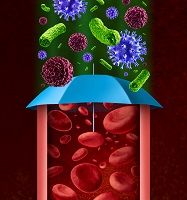The Best Fight Against RSV Infection Is the Body Itself
The respiratory syncytial virus (RSV) may have finally met its match with a new approach to eradicating the harmful infection.

The respiratory syncytial virus (RSV) may have finally met its match with a new approach to eradicating the harmful infection.
Instead of using medications or vaccines, lead author Antonella Casola, MD, and her colleagues found a way to use the body’s own resources to fight the virus. The body naturally produces the gas hydrogen sulfide (H2S) which helps lessen the severity of RSV; however, individuals infected with RSV produce less of the protective gas. The virus, which will infect most children by their second birthday, is a leading cause of upper and lower respiratory tract infections.
“RSV is a global health concern, causing significant morbidity and economic losses as well as mortality in developing countries,” the authors said.
The Centers for Disease Control and Prevention (CDC) advises that even though the virus clears up in one to 2 weeks in most patients, those with weakened immune systems can continue spreading it for one to 3 weeks. Also, the cold-like infection can lead to more serious illnesses. Without any effective vaccines or treatments currently on the market (besides immunoprophylaxis), the study’s findings published in the Journal of Virology are significant.
“This study shows that H2S can reduce viral replication and pro-inflammatory gene expression, both important components of lung injury in respiratory viral infections,” Casola, a pediatric infectious diseases expert, said in a news release.
The research revealed that the RSV infection caused the helpful gas to break down and instead increased the number of virus particles. However, the team also discovered that a drug could trigger the production of H2S. Not only did this stop the virus from multiplying, but it reduced inflammation of the airways as well.
“This treatment has the potential to help patients with RSV and can be rapidly translated into novel treatment approaches for viral bronchiolitis and pneumonia,” Casola informed.
After years of research failing to result in an active vaccine, this analysis indicates that H2S is a cell-derived mediator that can be formed into real-life treatment options, the authors concluded.